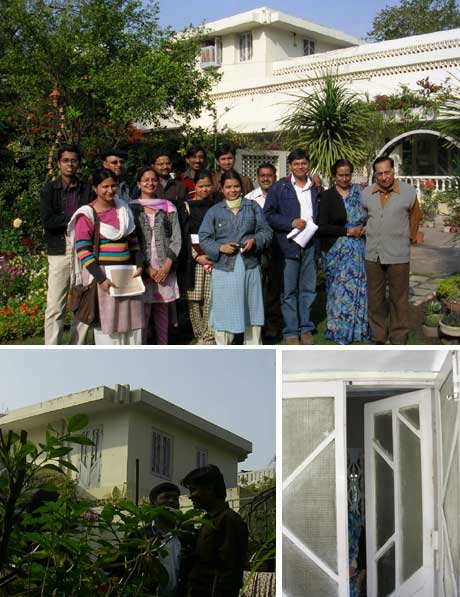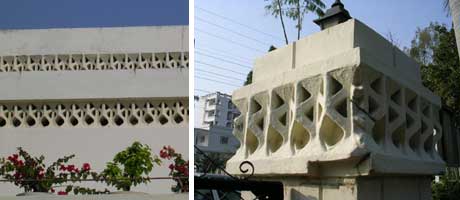The Cultural Heritage Educational Initiative was established in 2002 by Mary Kay Judy and local educators in Lucknow, Uttar Pradesh, India to promote local preservation through education and greater public awareness.
Griffin and Modernism in Lucknow: 1930-1970 held in March 2007 was the first seminar to focus on the concept of Modernism as heritage. The majority of students were practising professionals and architectural faculty members in Lucknow. The seminar began with a study and investigation of the career of Walter Burley Griffin in Lucknow in the 1930s.
Before leaving the classroom for field work, students learned about Griffin’s early career in America at Frank Lloyd Wright’s studio and his years in Australia after he and his wife, Marion, won the competition to design the new Federal Capital, Canberra, in May 1912. Griffin initially went to Lucknow in 1935 to design the University Library. He also designed the United Provinces Agricultural and Industrial Exposition grounds and buildings, a series of commissions for private residences and the Pioneer Press newspaper building. Unfortunately, most of these buildings and his legacy in India have been lost to history.
When Griffin was introduced in the seminar, most students were unfamiliar with his work, connection to Wright, or his role in local Lucknow architectural history. Using archives from the Avery Architectural Library in New York City of the original Exposition plan, renderings and drawings of his commissioned work in Lucknow, and donated copies of Two American Architects in India: Walter B. Griffin and Marion M. Griffin 1935-37, by Paul Kruty and Paul E. Sprague, the class sought to find any remaining evidence of his work and retrace his career through the city.
The Bhatia House was visited by Mary Kay Judy and the students as part of the seminar program. The house was designed by Griffin for Bir Bhan Bhatia a professor of science from Lucknow University. Dr Bhatia’s descendents still live in the house which is rapidly being surrounded by high rise apartments.
Griffin’s work and local contributions became a starting point for analysing early Modernism in Lucknow followed by a critical analysis of the thirty most significant local Modernist buildings dating from 1930-1970, identifying many works by significant Indian architects such as Achyut Kanvinde. During the seminar, international organisations that promote preservation of the Modern Movement were introduced, such as DoCoMoMo and the World Monuments Fund, and the work of the Walter Burley Griffin Societies in the United States and Australia.
Bhatia House with participants of the Griffin and Modernism in Lucknow seminar with, at right, the Bhatias, owners of the house and descendants of the original Dr. Bhatia, Griffin’s client. Upper storey detail. Front porch door. Photographers: Participants of the seminar, courtesy Mary Kay Judy
Details of the Bhatia House parapet and gate post at street. Photographers: Participants of the seminar, courtesy Mary Kay Judy


